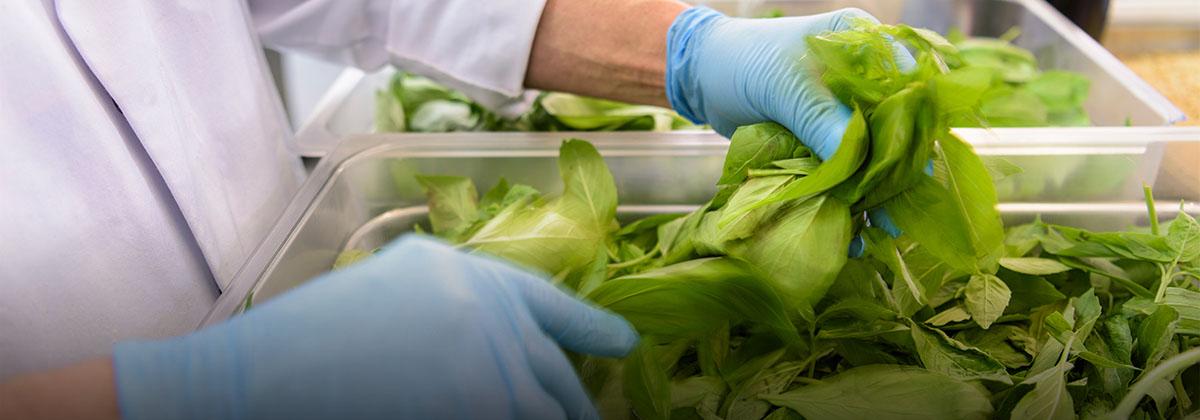The single biggest fear of food and drink manufacturers is contamination, but by introducing thorough checks and making use of outside expertise, it’s a risk that can be managed
With an output of £33 billion in 2022, food and drink is the largest manufacturing sector in the UK. It is also an industry facing a range of challenges, from rising prices to labour shortages to demand from customers for ever greater transparency.
The inherent risks within food and beverage production add further pressure onto manufacturers. “Health and safety within food and beverage manufacturing is and always will be a huge focal point,” observes Craig Stasik, Industry Sector Manager for Process at RS. “It’s to protect the workers in the factory and the product that leaves the factory. No-one wants to see accidents at work and equally no-one wants to see contaminated food products in the supermarkets – or worse, in someone’s mouth.”
Potential consequences
When contamination does occur, the consequences can be severe. Such incidents can damage brand reputation, jeopardise valuable contracts and result in more frequent audits by either authorities or customers. Manufacturers can also face legal prosecution. A meat processing plant, for example, was fined £60,000 plus costs after a Food Standards Authority (FSA) investigation found that the firm had failed to ensure the removal of specific animal parts which breached regulations.
This posed a risk to public health because, notes the FSA in its response to the case, “Specific animal parts must be removed before they enter the food chain to reduce risk from brain diseases that cattle, sheep and goats are vulnerable to, including BSE in cattle (referred to as ‘mad cow disease’), which has been linked to human diseases such as Creutzfeldt-Jakob disease (CJD).”
Reducing risks
The often-complex nature of food and drink manufacturing processes means it can be difficult to identify when and how contamination occurs. As the Health and Safety Executive points out, this sector “comprises over 30 different industries,” ranging from slaughterhouses to grain mills to bakeries to maltings to fruit and vegetable processing and more.
Contamination risks vary between facilities depending on the product, the raw materials used and the processes involved. It can also occur at different stages of production, caused by people, ingredients, machinery, processes or packaging.
Stasik works closely with customers to help them reduce the risk of contamination. “We help customers with a variety of contamination risks based around their maintenance and repair functions,” he says. “This is often around oils and greases leaking into food from machines and also the equipment, tools and clothing used around food when it’s being manufactured.
“For example, RS can provide companies with ‘food grade’ pens that have caps which won’t detach or are metal detectable, mitigating any risk of contamination, and we can provide shirts that have studs or poppers so there is no risk of buttons doing the same,” adds Stasik.
“We can also offer services to review the variety of oils and lubrication used onsite and make recommendations on the correct food-grade oils and greases – this can also include the provision of specialist Halal or Kosher oils and lubrication if required. We would work very closely with the manufactures to support all recommendations made.”
A tried-and-tested approach
Food and drink manufacturers can further reduce the risk of contamination by ensuring that they have a robust checking process in place to ensure product safety is continually monitored and maintained.
A tried-and-tested approach, originally developed by NASA, is a management system called Hazard Analysis and Critical Control Points (HACCP). Using the seven principles of HACCP, manufacturers can identify and control any risk associated with a product. These principles proceed from hazard analysis to determining critical control points to establishing limits for critical control points as well as monitoring procedures for critical control points, corrective actions, verification procedures and a record system.
"Suppliers such as RS can provide really useful insight to help with Hazard Analysis Critical Control Point (HACCP)"Craig Stasik, Industry Sector Manager, RS
Stasik is used to helping customers set up, refine and improve their HACCP system. “Suppliers such as RS can provide really useful insight to help with HACCP,” he explains. “That might mean that someone from RS walks the production line with a customer and helps them to evaluate potential hot spots and suggest possible improvements.
“We will also look at the type of PPE [Personal Protective Equipment] they are using, the oils and greases they’re using and even the lighting to make sure they have sealed lights, so that if a bulb breaks its glass can’t enter the food chain.”
Stasik believes that by working with suppliers such as RS as well as industry bodies such as the FSA, who regularly publishes advice and legal information to help the industry, it is possible for food manufacturers to greatly reduce the threat that contamination poses.
“The consequences are potentially devastating for companies if something goes badly wrong,” he concludes. “Contamination is a major issue and it’s not something that’s going to go away, simply because consumers are demanding greater information about where their food is coming from. It’s up to manufacturers to keep improving their processes and setting higher standards in the future.”
For more on the support available for food and beverage manufacturers, check out our industry-focused hub here.





